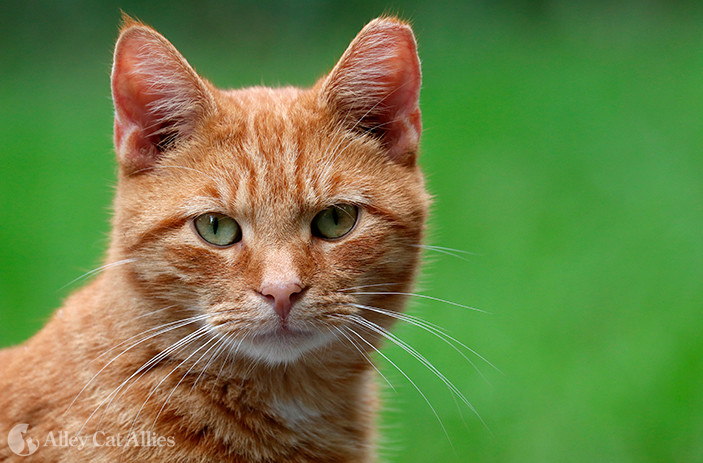The domesticated cat Felis catus has been spread across the globe by humans and has been cited as the cause of extinction for several species of birds and reptiles, and now, cats. By contrast , the Eurasian Wildcat Felis sylvestris has a historical native range restricted from the British Isles to Western China and has not been cited in directly causing the extinction of any fauna. For approximately 2000 years both domesticated cats and wildcats lived together in the British Isles. Domesticated cats, like many domesticated animals, have a year round breeding season whereas European populations of Wildcats have a narrow late winter breeding season. Domestic cats, even when feral, thrive in human habitations such as cities or farmlands. Eurasian wildcats by contrast are highly avoidant of people even when raised in captivity.
Eurasian Wildcat in the Snow
This difference in both breeding cycles and habitation preferences kept the overlapping populations of domesticated and wildcats genetically distinct from one another in Great Britain for nearly two millennia.
This genetic barrier began to suddenly break around 70 years ago. Studies indicate that the frequency of genetic markers of domesticated cats in the genotypes of wildcats jumped from 5% in the 1950s to around 74% in the late 90s. As it stands now, wild populations of wildcats in Britain are more genetically similar to domesticated cats than they are to other wildcat populations throughout Eurasia.
This extinction through breeding is largely due to habitat loss and urban encroachment. The last British wildcat populations were restricted largely to the highlands of Scotland. As urban and suburban habitats expanded, the wildcats were left with progressively slim options for wildcat mates. Simultaneously through the pet trade, the wildcats had a progressively increasing dating pool of domesticated cats to make their suitors. This combination of habitat loss and domesticated cat encroachment left the wildcats with little choice but to cross species' lines and mate with domesticated cat populations. In a few generations the once semi-distinct line between species has blurred to such a point that the British wildcat populations are now considered to be completely genetically extinct in the wild. Few captive populations of Scottish remain with genotypes that represent wildcat genetics more so than their wild contemporaries. Perhaps these captive populations can be bred and released to bolster the wild populations of wildcats. However, these reintroduced ones would very likely continue the pattern of hybridization if the core issues of habitat degradation and feral domesticated cats are left unaddressed.



No comments:
Post a Comment